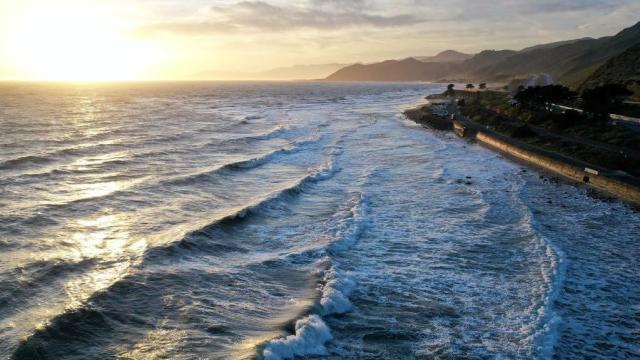When you think of getting freshwater from the ocean, you might imagine costly and environmentally damaging desalination plants. But one team of researchers thinks there could be a simpler strategy: collecting the water vapour that naturally occurs over the ocean’s surface.
Scientists at the University of Illinois Urbana-Champaign have proposed a device that would harvest water vapour from above the ocean, creating a supply of freshwater for arid communities. In a new paper, they also analysed 14 water-stressed locations where the hypothetical device could one day be used. The locations include the Atlantic Ocean off the coast of Lisbon, Portugal, and the Pacific Ocean off the coast of Los Angeles. A paper describing their work is published in Nature Scientific Reports.
The team looked at humidity data from 1990 to 2019 to analyse the water vapour available at different locales. “These locations, selected to represent the climatic variations, are close to high population centres that are near oceans across water-stressed regions around the globe,” the researchers wrote in the study. “As expected, they are in the subtropical regions of both the northern and southern hemispheres, where the largest arid and semiarid areas exist.”

According to the study, the imagined offshore structures — standing 100 metres tall and 210 metres wide — would be placed several kilometres offshore to maximise their ability to collect water vapour. The structure would collect water vapour and send it through a pipe back to land, where it would condense into freshwater.
“In essence, our approach mimics the natural physical process of the hydrologic cycle by which evaporated moisture from the ocean gets transported inland, cools, and condenses to then fall on the land surface as precipitation, except that we propose to engineer the pathway through which the evaporated moisture moves thus controlling the location of where the water is made available through controlled condensation,” they wrote in their paper.
Praveen Kumar, Prairie Research Institute executive director and study lead, said that drought-affected places like the American Southwest would be ideal recipients for this collected water.
“We are on a trajectory where the climate is changing. One of the primary lenses by which climate change affects human beings is water,” Kumar told Earther. “In this case, what happens is, under a warmer climate, there is more evaporation of water, and as a result there is more humidity that is available for capture. So under a warmer climate, you will need more water, and there will be more humidity available to meet the demand.”
Kumar also said that if this concept were to become a reality, it could be more environmentally sound compared to other water solutions. “Desalination has played a very important role for access to fresh water, but it has its challenges [with] sustainability in terms of waste,” he said. Desalination plants produce brine, a super-salty, chemical-filled mixture, as a waste product. Brine can be toxic to wildlife.
Water access solutions are sorely needed. About 2 billion people live in water-stressed regions, and that number may increase as climate change makes drought more common.
